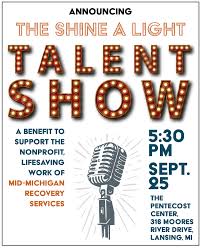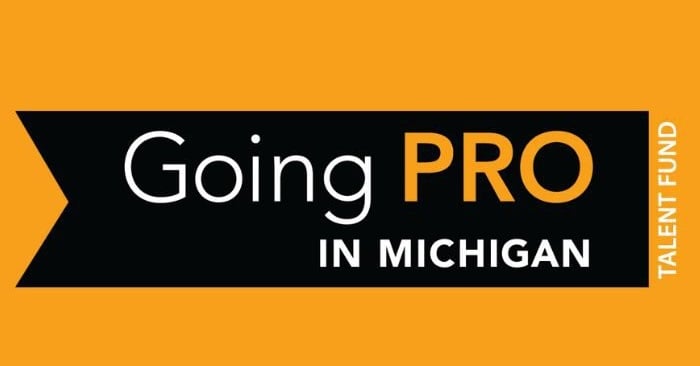 Jeffrey Mosher welcomes Patrick Patterson, Executive Director · Mid-Michigan Recovery Services Inc. (MMRS), Lansing, MI.
Jeffrey Mosher welcomes Patrick Patterson, Executive Director · Mid-Michigan Recovery Services Inc. (MMRS), Lansing, MI.
Watch Patrick discuss how insights on addiction recovery, workforce impact, and employer solutions, along with their upcoming Talent Show, in the YouTube video shared below:
Jeffrey had several questions for Patrick in this conversation:
- Welcome Patrick, Megan Doherty, President, FD Hayes, connected us, first tell us a bit about MMRS?
- She indicated that you have an event coming up, tell us about that?
- Is this a first time, one-off, or ongoing event?
- Who does it benefit and why should the business community be aware?
 » Visit MBN website: www.michiganbusinessnetwork.com/
» Visit MBN website: www.michiganbusinessnetwork.com/
» Subscribe to MBN’s YouTube: www.youtube.com/@MichiganbusinessnetworkMBN
» Like MBN: www.facebook.com/mibiznetwork
» Follow MBN: twitter.com/MIBizNetwork/
» MBN Instagram: www.instagram.com/mibiznetwork/
 Alcohol and Drug Use and Employment
Alcohol and Drug Use and Employment
Employment Costs
n Alcohol and drug disorders (ADD) are a leading factor keeping people out of the workforce.
l But most work
Ø Among the 46 million American adults with ADD, most of them — 30.1 million — remain on the job. (Source: CDC data from 2022) l This contributes to high costs for employers, calculated at an average of $8,817 annually for every employee with an untreated ADD. (National Safety Council)
l The tangible costs are related to absenteeism, “presenteeism,” health care, workplace accidents and turnover — but don’t consider additional costs, such as employee morale.
n Great site for the issue the NSC
l Individual employers can calculate their costs: Search for “NSC Substance Use Calculator.”
l Employment has been found to be a motivator for entering and adhering to treatment. (Source: 2020 report commissioned by DOL)
Great Difference Between Recovery and Use
n Use that effects the workforce – unknown
l Build your HR systems to be responsive
Ø Make sure your EAP and HR staff have mental health competence
Ø Alcohol and drug use competence, know their facts
Ø The two usually go together
l Ensure there’s an off-ramp for employees who want to use it
n Recovery – known, volunteered (Disabling condition, can’t ask in an interview)
l Starts employment with integrity unusual in others, contrary to normal employment
l Consistent with the tenants of recovery, 12 step and great humility
l Evidence Shows
Ø Early in recovery less than three years, relapse happens
· Much better than the 10-20 percent you don’t know about Ø Substance abuse better than other illnesses NIDA
· Hypertension
· Diabetes
· Asthma
Ø Over three years, uncommon
Ø After five years, no greater risk than any person in the population n Workers in recovery tend to be strong employees. (National Safety Council)
l Average eight days off each year compared to the average 11.6 days off
l Tend to stay in jobs longer
l Less likely to be hospitalized
l Have fewer primary care visits.
l They may be a good value
l Most employers will miss the hire and the value
More Data from the Connecticut Recovery Friendly Workplace Program
n Each dollar spent on treatment and early intervention saves $4 in healthcare costs
n Employees in recovery save around $500 each year in health plan usage costs compared to those with untreated ADD.
n Employees in recovery miss 5 days fewer each year than those not in recovery.
Recovery Friendly Workplace n Pioneered in New Hampshire in 2018, adopted by the state of Michigan in 2022 n Mid-Michigan Recovery Services is a certified Recovery Friendly Workplace.
n One of the leading practitioners is in northern Michigan.
l MMRS recently invited the Petoskey-based Community Recovery Alliance to present at a conference we hosted
l CRA has a partnership with one of the region’s major employers, Manthei Wood Products l Manthei Wood Products, part of Manthei Group that operates material and construction businesses in the region, has made a conscious effort to hire people who have struggled with addiction. (Bridge, Aug. 9, 2024)
l The company bought a former 10-unit hotel in 2021 and converted it to recovery employee housing
l Employees pay enough to cover the operating costs of the housing. They get van rides to the factory and attend individual and group meetings
l The initiative includes support from CRA peer-recovery coaches who visit the workplace to check in with workers
l CRA has similar relationships with other employers in northern Michigan
l This initiative can help address two crises at once: the ADD and labor shortages








